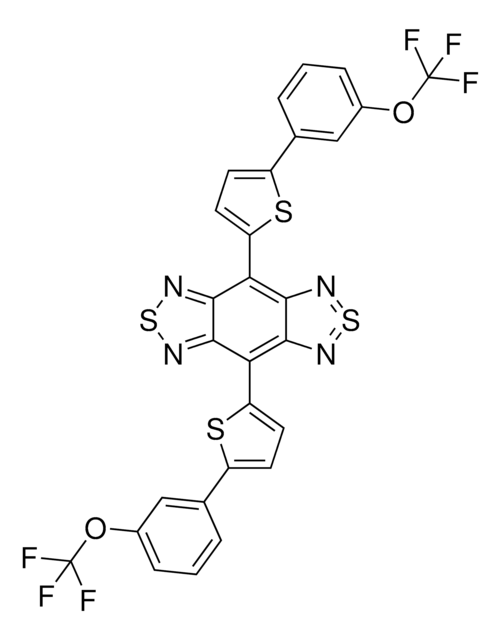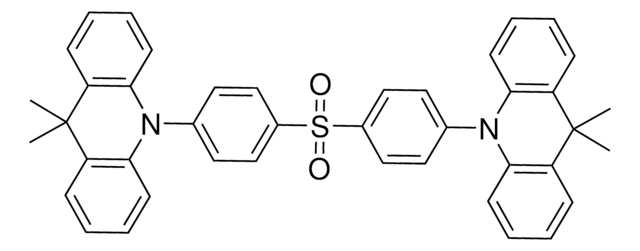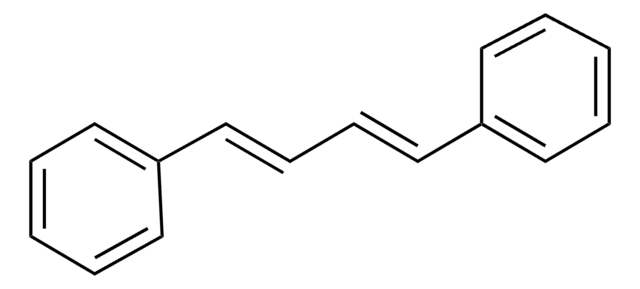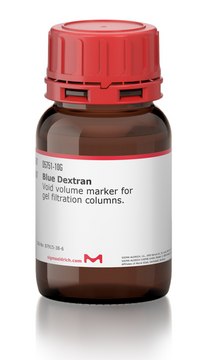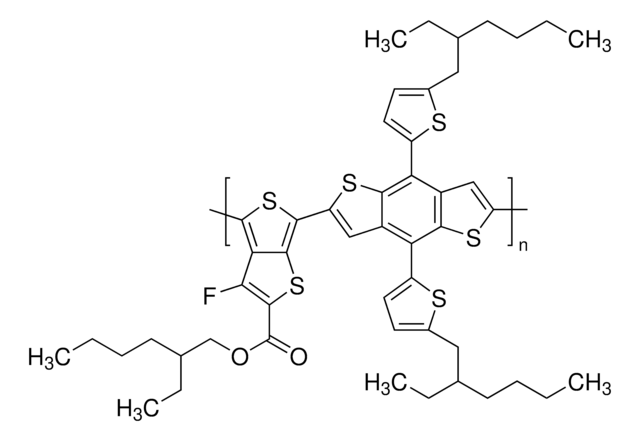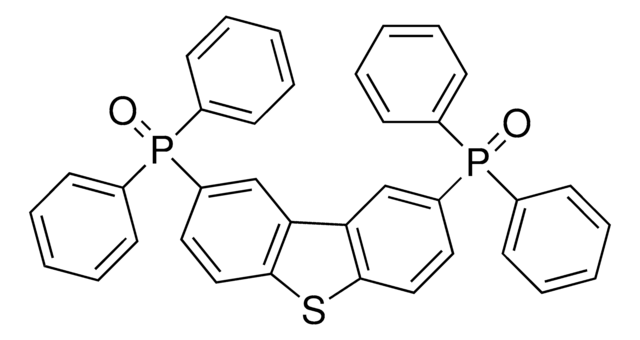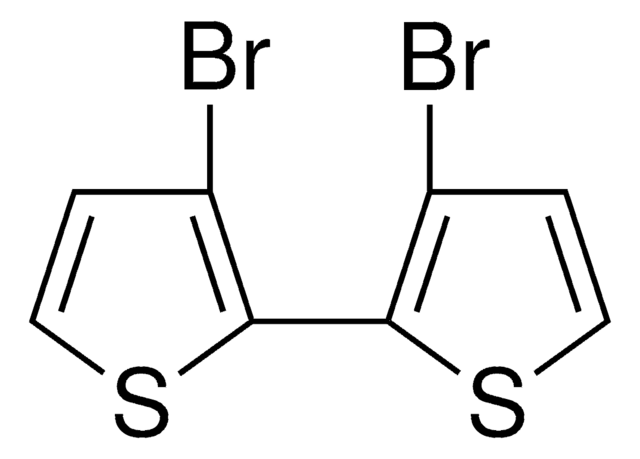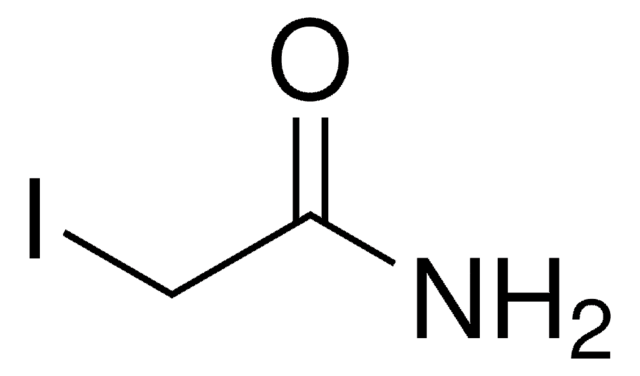911135
TU-3
Synonym(s):
4,4′-(2λ4δ2-benzo[1,2-c:4,5-c′]bis[1,2,5]thiadiazole-4,8-diyldi-5,2-thiophenediyl)bis[2-dodecylbenzonitrile], 4,8-Bis [5-(4-cyano-3-alkylphenyl)-2-thienyl] benzo[1,2-c:4,5-c′] bis [1,2,5] thiadiazole
About This Item
Recommended Products
description
Decomposition temperature: 371 °C (Decomposition start temperature)
mobility = 2.3 cm2 / Vs (@Vsd=100V)
on / off ratio = 107
Structure: BG-TC @ SiO2 / Si
electrode: Au
film: TU-3 / CHCl3 spin coat
Assay
≥99% (HPLC)
form
powder
mol wt
897.33 g/mol
color
dark green
mp
291 °C
storage temp.
2-8°C
Application
This material achieves a high electron mobility of 2.3 cm2/Vs or more in transistors, making it highly suitable for this application. The mobility of amorphous silicon used in general LCDs and other applications is about 0.5-1cm2/Vs.
Legal Information
Storage Class Code
11 - Combustible Solids
WGK
WGK 3
Flash Point(F)
Not applicable
Flash Point(C)
Not applicable
Regulatory Information
Choose from one of the most recent versions:
Certificates of Analysis (COA)
Sorry, we don't have COAs for this product available online at this time.
If you need assistance, please contact Customer Support.
Already Own This Product?
Find documentation for the products that you have recently purchased in the Document Library.
Articles
Professors Tokito and Takeda share design principles and optimization protocols for organic electronic devices, focusing on flexibility and low cost.
Related Content
Organic electronics utilizes organic conductors and semiconductors for applications in organic photovoltaics, organic light-emitting diodes, and organic field-effect transistors.
Our team of scientists has experience in all areas of research including Life Science, Material Science, Chemical Synthesis, Chromatography, Analytical and many others.
Contact Technical Service